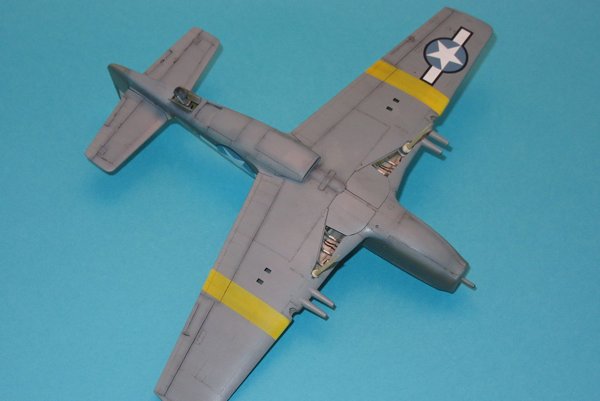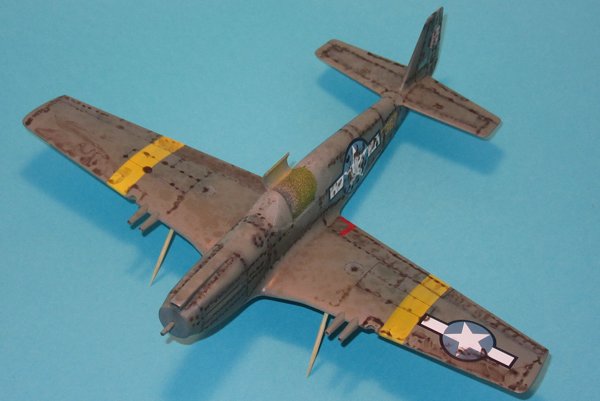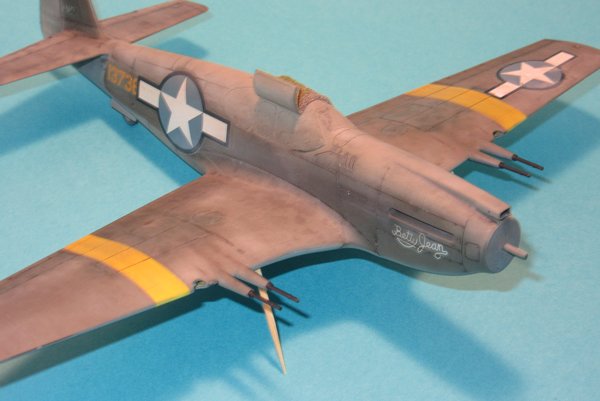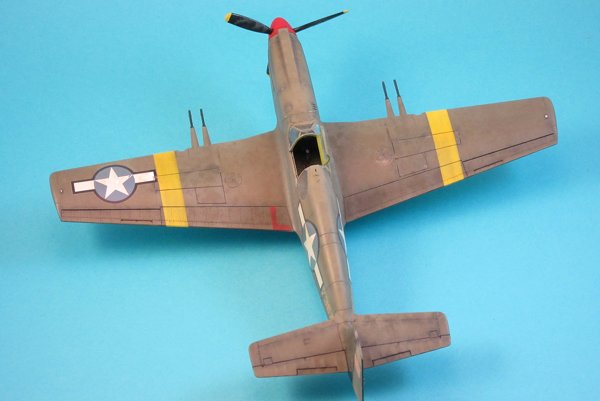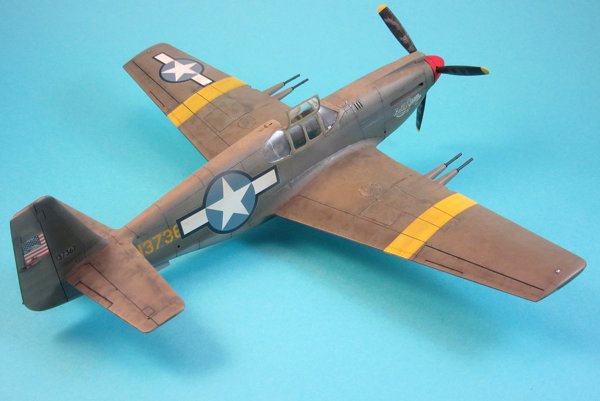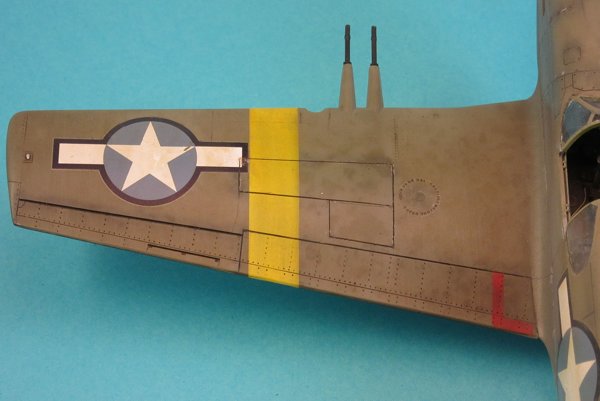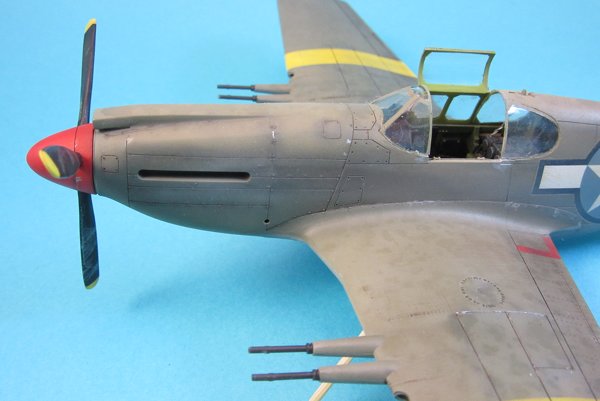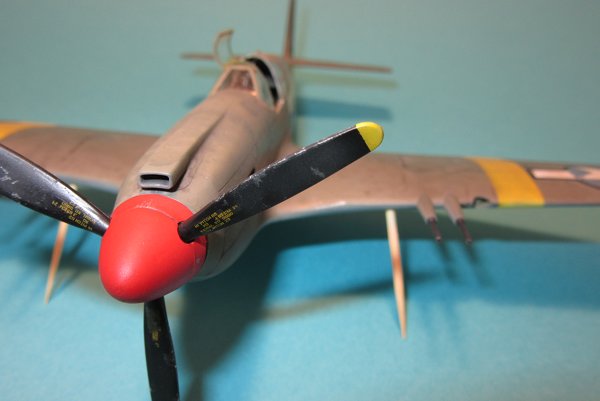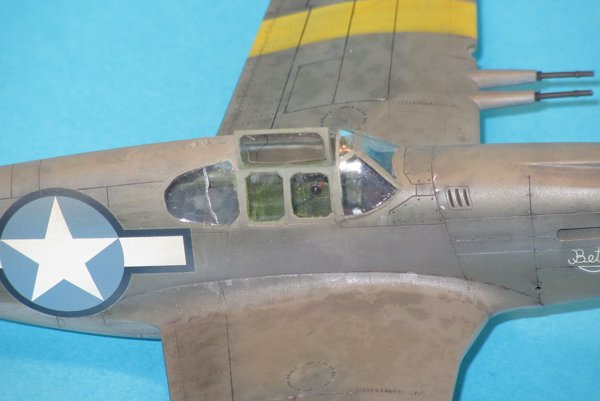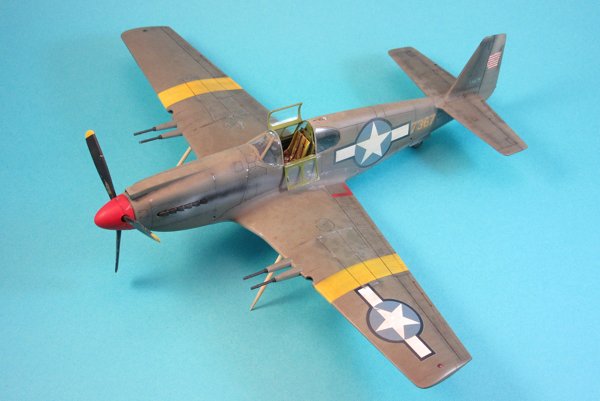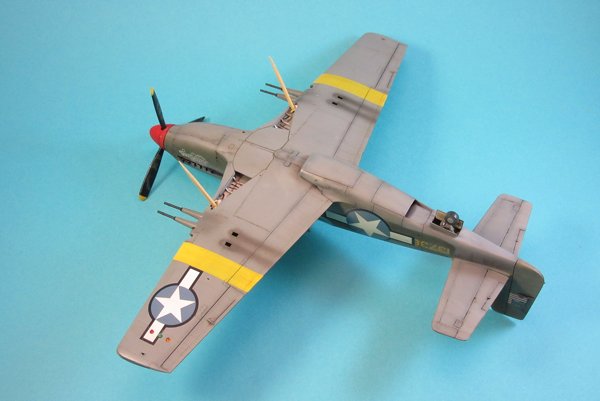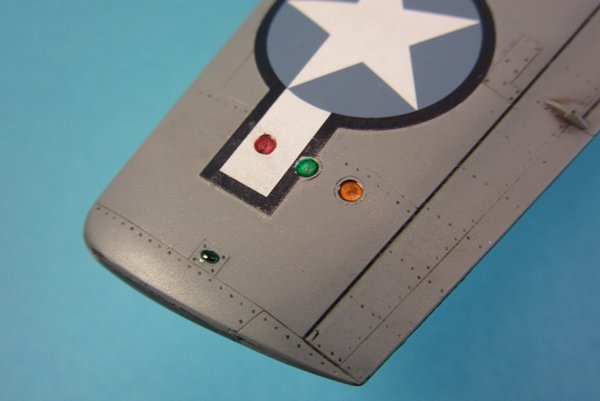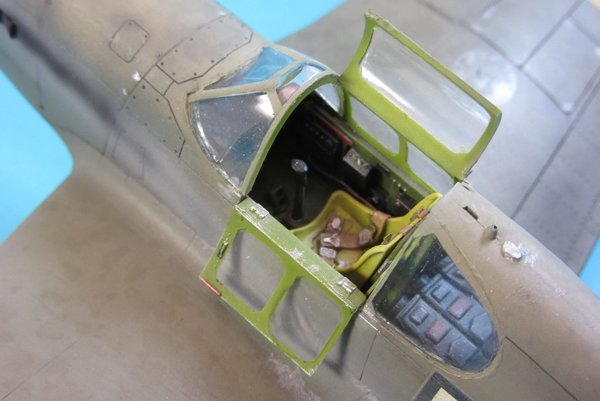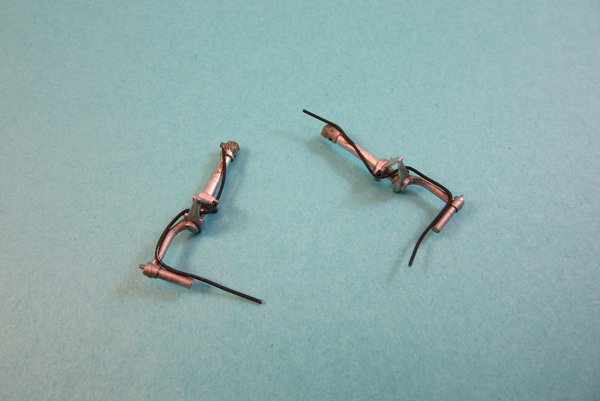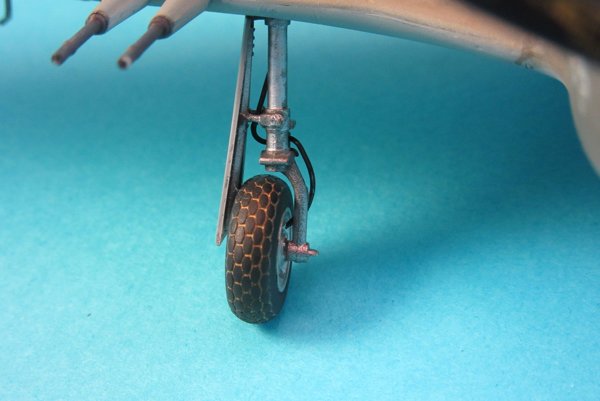Thanks for the encouragement Samuel and Joel.
I went back to the bench today and figured out a way to fix the canopy, or at least clean it up. I debated just tearing it out totally and starting over but I wanted to avoid that if I could. Here's my problem...
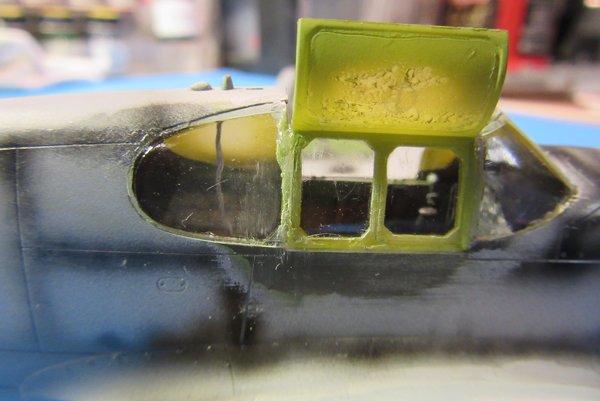 This pic shows the CA mess that resulted from trying to fill the gap at the back edge of the canopy side.
This pic shows the CA mess that resulted from trying to fill the gap at the back edge of the canopy side.When I originally masked it, I used some old Tamiya P-51B masks on the inside and Parafilm M on the outside. This was the first kit I had tried masking with Parafilm, but I am sold. It was much, much easier than my old method of Tamiya tape. I will be sticking to Parafilm from now on unless the kit includes its own masks, or unless I have to use CA accelerator on the canopy...
When I filled the gap with thick CA and hit it with accelerator I was a tad overzealous with the accelerator. It cured the CA no problem at all but it also seemed to turn my Parafilm into goop. Like instantly. I scraped the goopy Parafilm all off, which is what you see in that pic.
You can see where I scratched it trying to sand down the CA. I set it aside after I made all of those scratches, and came back to it today with more patience. To avoid scratching it up worse, I ran Tamiya tape down the vertical edges and then hit it with a coarse sanding stick. That seemed to do the trick, I managed to smooth out that CA mess without doing any more damage. After I cleaned up the canopy seams to my satisfaction, I remasked the outside with Parafilm but this time I put on two layers just to be safe and got ready to paint.
I came across an SBD build that has one of the best faded paint jobs I have seen:
http://www.arcair.com/tnt1/101-200/tnt158-weathering-Saltydog/00.shtmI am going to try something similar here, except with enamels and in OD instead of blue. I will be using 4 shades of OD sprayed in thin layers. It will take a while but in the end it should look really great. I sprayed Model Master OD along the bottom demarcation line for the camouflage and on the fuselage sides where "Betty Jean" wouldn't have seen as much sun fading. I also hit the tail with a thin mist.
 The first layer of paint laid down. Model Master enamel, FS34087 Olive Drab. I did not add any white for scale effect like I normally would.
The first layer of paint laid down. Model Master enamel, FS34087 Olive Drab. I did not add any white for scale effect like I normally would.I set her aside and mixed up the next color, Faded OD. I sprayed this on in a thin mist along the upper sides of the fuselage and on all horizontal surfaces. I kept misting it on until I was satisfied with how the preshading bled through.
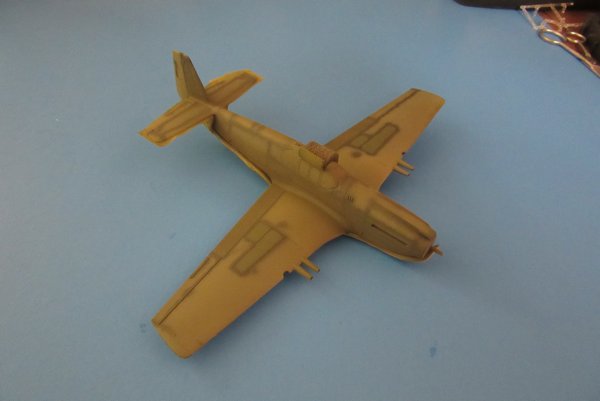 Second layer of paint down. I will let this cure for a couple of days before I start the salt weathering for the third layer.
Second layer of paint down. I will let this cure for a couple of days before I start the salt weathering for the third layer.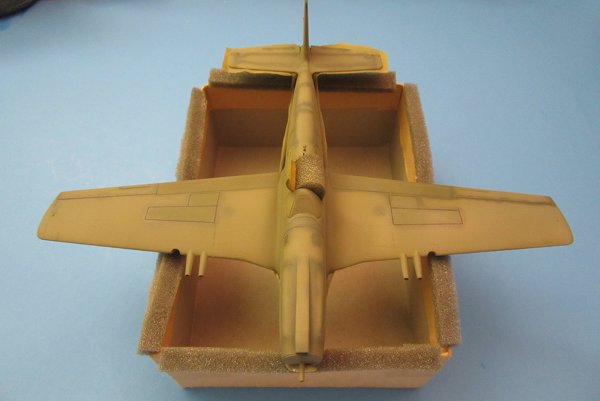 Front view after the second shade of OD was applied and I set her in my ultra high-tech drying stand. The next two layers will be cut with white to really get a blotchy fade effect on the upper surfaces.
Front view after the second shade of OD was applied and I set her in my ultra high-tech drying stand. The next two layers will be cut with white to really get a blotchy fade effect on the upper surfaces.So far, so good. The canopy won't look as great as it could have, but hopefully the paint job will come out looking first rate.
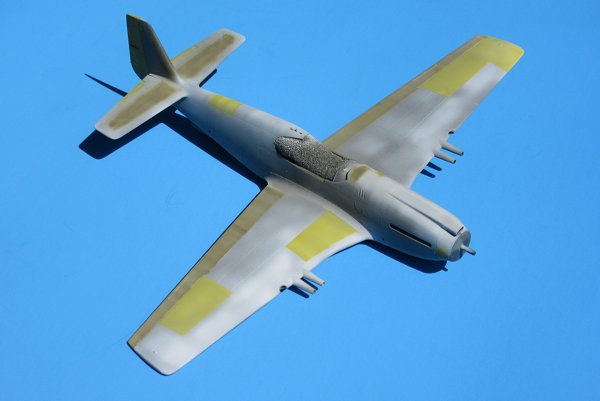




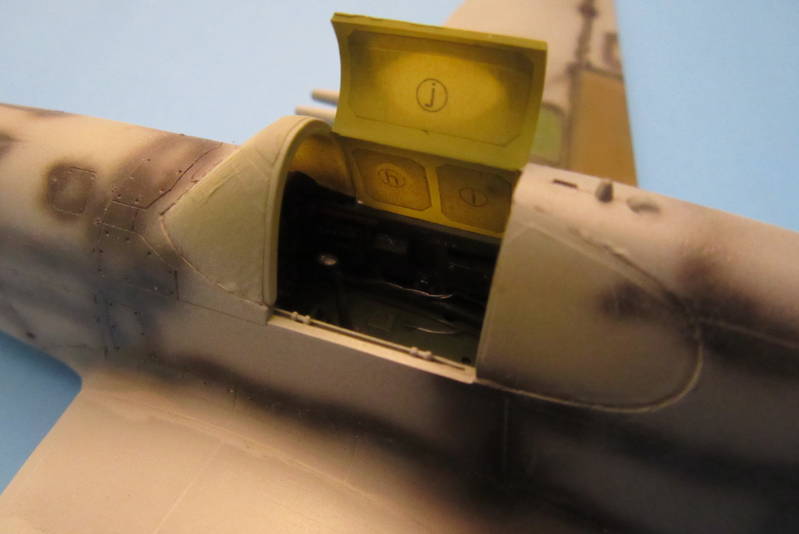
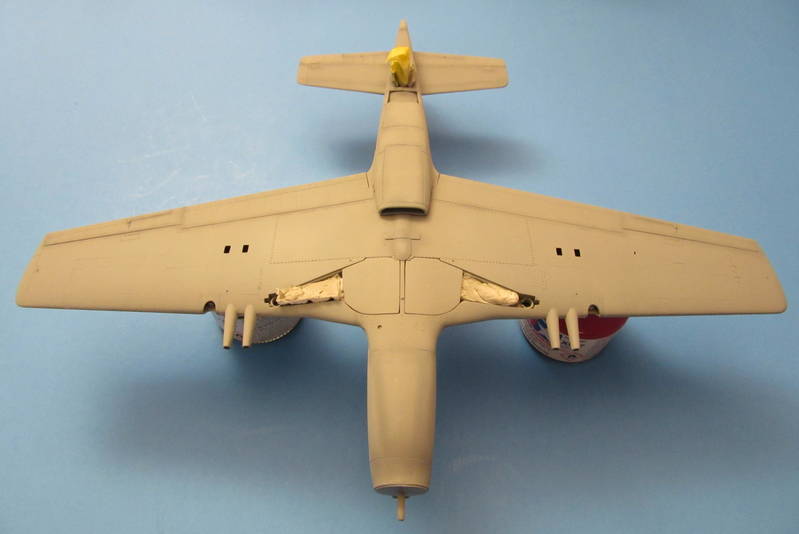










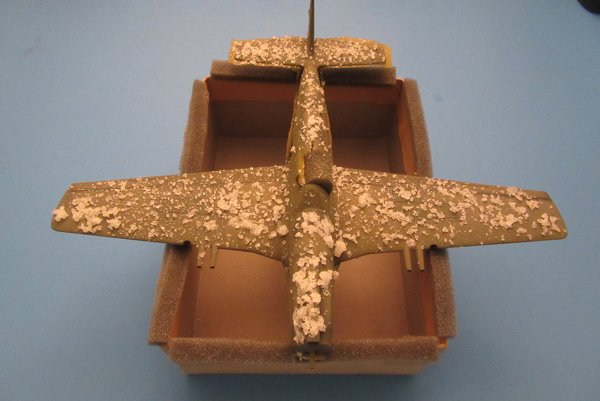


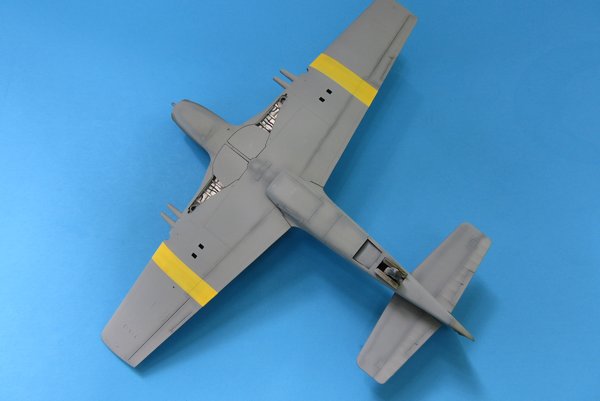


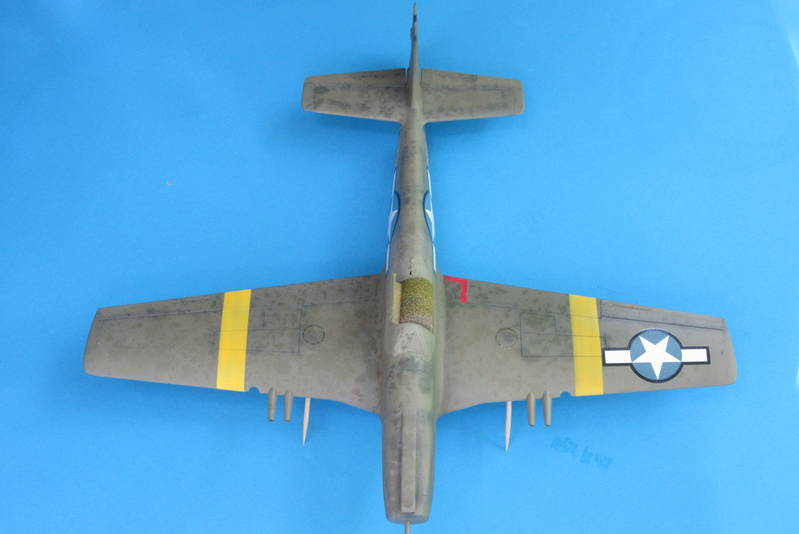
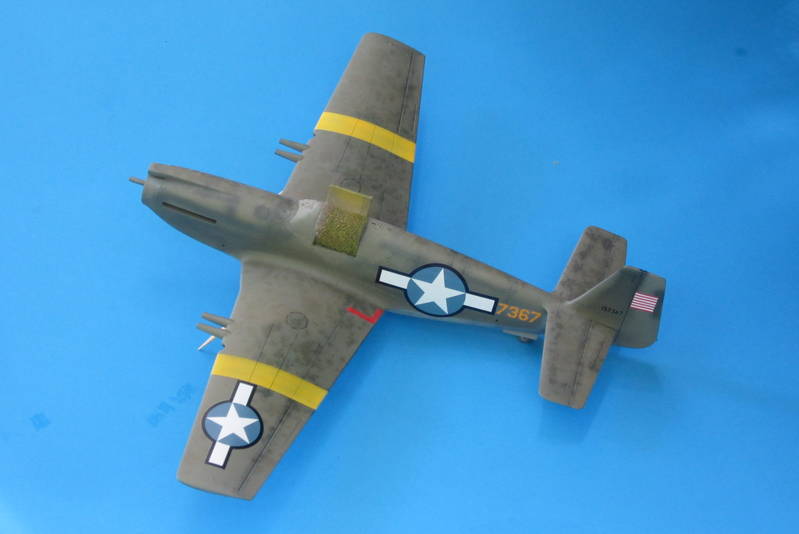
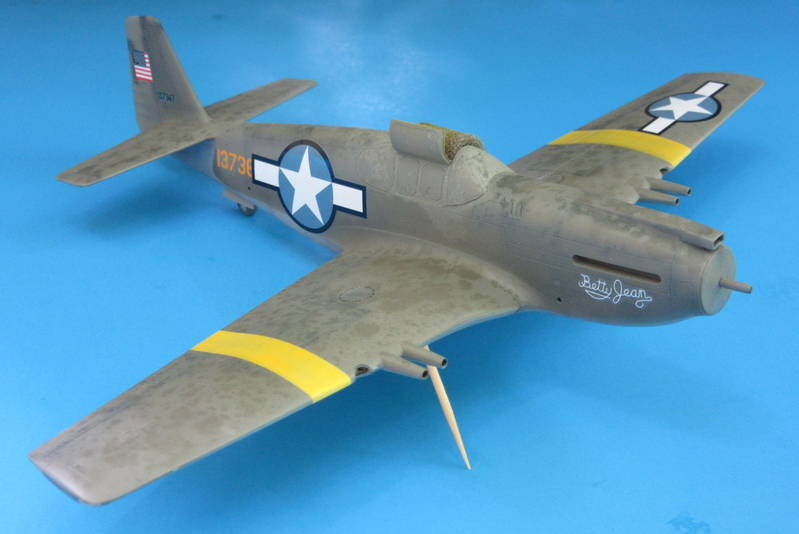



 I just aim for colors that LOOK right.
I just aim for colors that LOOK right. A tutorial or a DETAILED (like all the steps between the steps) would be appreciated.
A tutorial or a DETAILED (like all the steps between the steps) would be appreciated.


